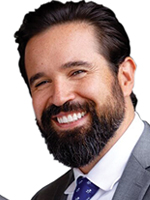Articulating general damages for your elderly client
When our clients are elderly, forgetful, diagnosed with dementia, or have passed, we must be very wary of the defense hiring experts to minimize their loss
There is no greater privilege than advocating for the elderly – but it is not without its challenges. One of the greatest challenges is articulating general damages (pain, suffering, and loss of enjoyment of life) when your elderly client’s pre-injury baseline includes diagnoses of dementia, lack of mental capacity and/or multiple physical comorbidities. Defense lawyers mistakenly jump on your client’s vulnerable comorbidities, especially when they have dementia and argue “what’s the damage?”; Your client “doesn’t even remember the incident”; or my personal favorite, “this is an unfortunate event but your client hasn’t lost anything because of her pre-injury baseline and short life expectancy.” We must be prepared to respond and turn this line of attack into a big mistake.
First, from a human perspective, these arguments are offensive because they are all saying the same thing: “the life of your elderly client has no value.” This should infuriate fair-minded jurors, experts, and judges who are seeking to deliver justice. Second, these offensive arguments only serve to highlight the legislative intent behind the enactment of the Elder Abuse Statute (Welf. & Inst. Code § 15657), which is to “protect a particularly vulnerable portion of the population from gross mistreatment in the form of abuse and custodial neglect.” (Delaney v. Baker (1999) 20 Cal.4th 23, 33.) Therefore, the best offense to these defense arguments is to embrace your client’s pre-injury comorbidities and vulnerable status because the truth is that your client is living in an assisted-living facility or nursing home because of his or her vulnerable status. By embracing this reality and wrapping our arms around our client’s vulnerable status, we diffuse any purported merit to these “defenses” and highlight the need for enhanced remedies we are seeking in our case.
Short life expectancy or robbed of your golden years?
When the defense argues that our elderly client’s damages are limited because of his or her “short life expectancy” we must respond by reminding the Judge and jury that the elderly are living in their “golden years.” The idea behind the “golden years” is that as we grow older our time on earth becomes more finite and precious. When we are young, we can afford to waste a day playing video games or even watching an entire Netflix series in a weekend. However, as we grow old, we don’t have a second to waste, thus any precious time “taken” from our elderly clients due to the neglect of the Defendants is more valuable than if he or she had a longer life expectancy. Again, by embracing the defense’s argument to reduce general damages, we find an opportunity to highlight just how precious the time, memories and activities our injured, elderly client was robbed of due to the Defendant’s neglect.
Party admissions on your client’s pre-injury status
In addition to embracing your client’s vulnerabilities and golden-years status you can find great documentation on your client’s pre-injury status in the facility’s chart. These party admissions can be very useful in demonstrating the loss of enjoyment of life, and pain-and-suffering damages your client is seeking to recover as a result of the neglect in your case. Depending on whether the facility is a nursing home or assisted living facility, you can find these party admissions documented in some or all of the following documents: Minimum Data Set (MDS), pre-placement appraisal, activities logs, resident council minutes, nursing notes, Interdisciplinary team (IDT) meeting notes, care plans, standup meeting minutes, hand-off reports, resident logs, and therapy records. These documents provide a treasure trove of statements like: “[Client] loves to sing, watch T.V., participate in group activities, eat with friends, knit, etc.” You can use these pre-injury party admissions from the facility and compare them to the post-injury documentation at the same or new facility to highlight the effect of the injury. If your client is incapacitated and incapable of effectively articulating the general damages he or she has suffered, it is also useful to look for documentation regarding changes in behavior such as anxiety, anger, acting out, refusing to eat, or attempts to elope the facility. Residents with dementia communicate through their behavior and if any of the aforementioned is documented, it can tell your experts and the jury a lot about the general damages your client has suffered as a result of the neglect and abuse.
Cases to reference
There are several great elder-abuse trial lawyers in California who have embraced these principles and achieved tremendous results for their clients. Most recently Stalwart Law Group achieved a seven-figure general damages award in M. Sherrill Phillips, by and through her Guardian Ad Litem, Lydia Phillips v. Avantgarde Senior Living, LLC, Case Number 19STCV11501, Superior Court of Los Angeles County, Van Nuys. In Phillips the injured plaintiff was an 89-year-old with a diagnosis of dementia and multiple physical comorbidities before fracturing her neck at the facility from an unassisted fall. Despite these facts, through effective advocacy her counsel was able to articulate the loss Ms. Phillips suffered because of her advanced age and the jury delivered justice.
Use of Sanchez to limit the defense
When our clients are elderly, forgetful, diagnosed with dementia, or have passed, we must be very wary of the defense hiring experts to minimize their loss. Or even going as far as to do the good ole “they were going to die in a few years anyway” defense. Trust me, this is happening. The defense is hiring “life expectancy” experts. The CACI tables say your client was going to live another 25.5 years? Well, my expert says he smoked when he was 12. Oh, and has high blood pressure. Oh, and his grandfather died of a heart attack. So, guess what, his life expectancy is only 10 years. Welcome to the new disgusting tactic. But fret not, our brethren, for there is an arrow in our quiver that will totally eliminate and/or drastically muzzle this “expert”: Sanchez.
First off, let me tell you right now: Read the case. It is so helpful to all of our cases. We should never waive its use. It has actually been the law forever; we just lost sight of it
In this context, the expert would only be allowed to discuss his or her opinions gathered independently. It cannot be solely based on the opinions and test results of others. Many of these experts’ sole opinions are just reading reads, cherry-picking test results and diagnosis of other medical doctors, and forming opinions that people had some condition that would have led to their early demise anyway. So how do we stop all this?
Pinning down the expert
In the expert deposition. Pin down their expert that they are relying on the validity of test results or CT scans they never saw; on diagnosis made by others and they are adopting it fully. How can they know this was correct? Did we ever hear from the doctor making these opinions? If neither the defense nor you listed these doctors in the non-retained section of the expert designation under CCP section 2034, then they are out of luck. Without laying the foundation to get in all the evidence these “experts” are relying on, again, they are not going to be able to testify. In reality they are taking out of context what the treating doctor is doing anyway. No treating doctor would subscribe their patient dying early to a reasonable degree of medical certainty. I mean, that is why they are hiring this defense hack.
One way to exclude them is on the alternative-causation motion in limine. Pin these people down on whether they can say something else was the cause of death, or would have been, to a reasonable degree of medical probability. And the defendants have the burden of proof on this alternative cause. (Stewart v. Union Carbide Corp. (2010) 190 Cal.App.4th.) Much of the time they will say “possibilities.” Not good enough to get in front of a jury!
Here is a list of items an expert of the defense would have no personal knowledge to talk about, and it would in no way find its way into evidence unless that treater came to testify to lay the foundation (then you could defuse the bogus opinions through them anyway):
Cirrhosis of the liver Prior falls Dementia Hypertension Prior brain injury Bone-density scores Blood-alcohol results
The list can go on forever. Remember, the defense can still lay the foundation if they call any treater. Or through your client (if still alive or competent), or through family members who would have personal knowledge. When looking at an opinion of these experts, find out the basis. Make them list it out. Then find out where that basis comes from. Go step by step. At each turn, ask them, pointedly, whether that is their opinion, or that of another. Or whether they personally reviewed that blood test or scan. Pin them down that they are solely relying on that specific medical record or result.
In the end, if you do not get a judge who wants to understand or enforce the law, then just load up on cross. It is a pretty offensive defense anyway.
Robert T. Simon

Robert T. Simon is co-founder of the Simon Law Group and acts as the primary trial attorney. He is a proud member of ABOTA, CAALA, CAOC, CASD and OCTLA, is a past president and active board member of Los Angeles Trial Lawyers’ Charities.
Sean O’Neill

Sean O’Neill is a trial lawyer at Stalwart Law Group in Los Angeles and a Founding 50 member of Justice HQ. He focuses his trial practice on elder abuse, medical malpractice, birth injury, managed care liability, wrongful death and other catastrophic personal injury matters throughout California. Sean is a member of the National Trial Lawyers Top 40 Under 40, CAALA, and CAOC. He is a graduate of the University of Arizona and Pepperdine University School of Law. Sean can be reached at: Sean@Stalwartlaw.com
Copyright ©
2026
by the author.
For reprint permission, contact the publisher: Advocate Magazine
